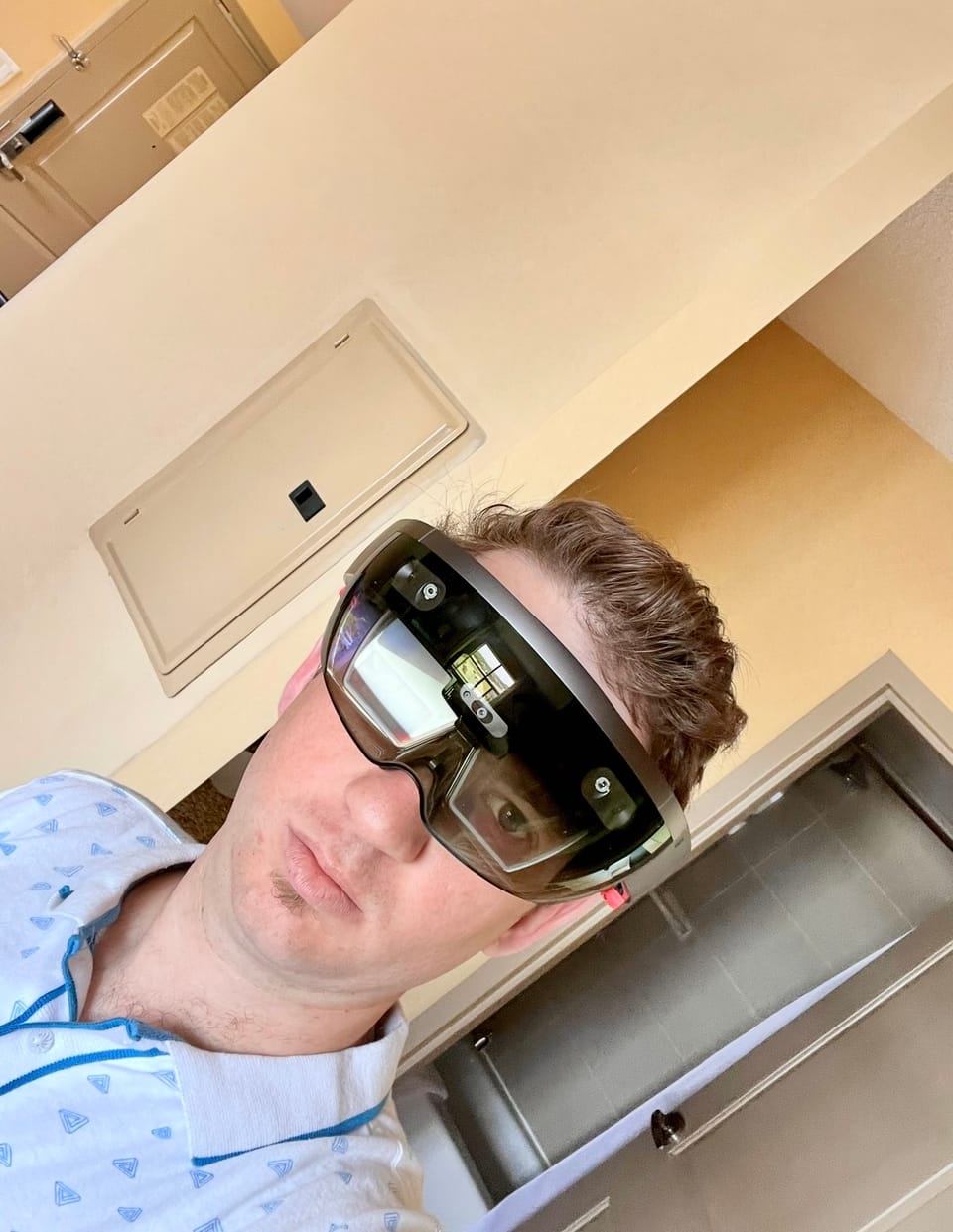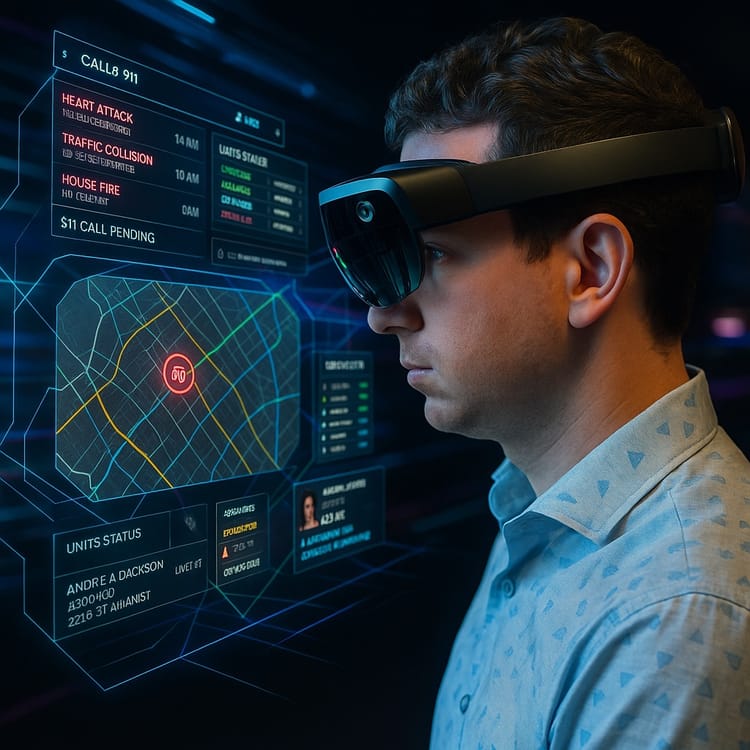Immersive Futures: How VR and MR Are Transforming Healthcare Education

Introduction: Stepping Into a New Reality
The room is buzzing with urgency. A patient lies on the gurney, blood pressure dropping fast, alarms screaming in the background. A team of students hovers—one calls for intubation, another prepares IV fluids, while a third checks vital signs. The tension is real, the pressure immense. But in this trauma bay, no life hangs in the balance.
The patient is a virtual construct, part of a simulation inside a VR headset. The learners are medical students scattered across the globe, linked together in the same digital emergency room. When the session ends, they lift their headsets and debrief: What went well? What broke down? What needs improvement?
This is not science fiction. It’s happening now. Virtual Reality (VR) and Mixed Reality (MR) are rapidly reshaping healthcare education. As medicine faces unprecedented challenges—staff shortages, complex patient needs, rising costs, and strained training pipelines—immersive technologies are being called upon not as novelties, but as powerful new tools.
The central promise is compelling: VR and MR can create safe, repeatable, high-fidelity environments where the next generation of healthcare professionals learn faster, fail safely, and emerge more skilled and empathetic.
The Limits of Traditional Healthcare Training
For centuries, medicine has relied on the apprenticeship model: learn by observing, then doing, under close supervision. While this system has trained generations of clinicians, it is showing its cracks in today’s high-pressure healthcare world.
- Scarcity of Experience: Students may go through years of training without encountering certain rare but critical conditions. A paramedic might never see a real anaphylaxis case before graduation; a medical student may not observe a major trauma until long after residency.
- Resource-Intensive: Cadaver labs are costly, and access is shrinking. High-fidelity mannequins—once revolutionary—lack the responsiveness, variability, and emotional realism needed for complex cases.
- Overburdened Systems: Hospitals are struggling with overcrowding, making student access more limited. Supervisors, under pressure to move fast, often cannot allow students to participate fully.
The stakes are high. In medicine, trial-and-error learning can have irreversible consequences. Yet traditional training too often leaves learners underexposed and underprepared.
How VR and MR Create New Possibilities
Trauma Simulation: Controlled Chaos
In a VR trauma module, students are dropped into a chaotic accident scene. A bus has overturned; victims present with multiple fractures, internal bleeding, and airway obstruction. The learners must act in real time—triaging, stabilizing, making split-second decisions. The patient’s physiology responds dynamically: delay in airway management leads to oxygen saturation dropping, missed bleeding control leads to cardiac arrest.
No textbook can replicate that immediacy. And unlike real trauma, the case can be reset, replayed, and practiced until proficiency is achieved.
Interdisciplinary Training: Borders Dissolved
Healthcare is teamwork. Yet too often, students learn in silos—medical students with medical students, nurses with nurses. VR and MR change that equation.
In one project at Stanford University, medical, nursing, and pharmacy students train together in VR-based emergency simulations. Across the world, platforms are emerging that connect learners globally: a nursing student in India, a paramedic trainee in Kenya, and a surgical resident in Germany can collaborate inside the same virtual ICU.
Mixed Reality takes it further. With tools like Microsoft’s HoloLens, instructors overlay 3D anatomy onto mannequins, blending digital and physical elements. Students see blood vessels, organs, and pathologies layered onto the body in front of them, merging tactile skill-building with digital precision.
Data, Insights, and Impact
The enthusiasm for VR/MR is not just anecdotal; it is backed by evidence.
- Accelerated Learning: A 2022 study in JMIR Medical Education showed students using VR laparoscopic modules achieved competency 29% faster than those using traditional methods.
- Error Reduction: Research from Imperial College London found surgical trainees trained in VR committed up to 40% fewer errors when they transitioned to real patients.
- Confidence Gains: In a 2023 nursing study, students using MR for IV insertion reported a 40% confidence boost compared to controls. Confidence, educators stress, translates directly into better patient interactions.
- Scalability: Programs in low-resource settings are leveraging VR to train hundreds of students without access to cadavers or advanced labs. In India, low-cost VR anatomy platforms are expanding access to medical education in ways that were previously unimaginable.
The numbers point to a simple reality: immersive learning is not just engaging, it is effective.
Beyond the Lab — VR/MR as Cultural and Human Tools
Leadership Under Pressure
In a mass-casualty simulation, decisions must be made in seconds. Who leads? Who delegates? Who freezes? VR environments expose these dynamics in a controlled way, allowing students to practice not just clinical skills, but leadership under fire.
A study at Mayo Clinic found that immersive leadership training improved both communication speed and decision accuracy during high-stakes simulations. The result is not just better doctors or nurses, but better team leaders.
Empathy and Patient Experience
Equally powerful are simulations that put clinicians into the patient’s perspective. VR programs are now available that simulate the disorientation of dementia, the auditory hallucinations of schizophrenia, or the anxiety of pediatric hospitalization. Students describe these experiences as transformative, fundamentally shifting their understanding of what it means to be a patient.
This is not a gimmick. In an era where burnout and detachment are major risks, training empathy is as critical as training surgical technique.
Communication and Difficult Conversations
Breaking bad news, navigating cultural differences, or managing family conflict are among the hardest parts of clinical practice. VR/MR platforms allow students to rehearse these conversations with virtual patients and families. The goal is not to script responses but to build the emotional resilience and communication flexibility that real-world medicine demands.
Challenges and Opportunities
No transformation comes without obstacles.
- Cost: High-end VR headsets, haptics, and software development can be expensive. Elite institutions may afford it, but will smaller colleges or rural programs be left behind?
- Faculty Training: Instructors must be trained to use and teach with VR/MR. Without faculty buy-in, even the best tools risk gathering dust.
- Equity: The danger is that immersive training becomes another layer of privilege in global health education. If only wealthy universities deploy it, disparities may widen.
Yet opportunities abound. Hardware prices are dropping. Open-source simulation platforms are emerging. International collaborations—like the WHO’s exploration of VR for global health training—hint at how shared infrastructure could democratize access.
The key will be intentional design: integrating VR/MR as complements, not replacements, to traditional training, and ensuring access is equitable.
A Forward-Looking Vision
VR and MR are not about flashy gadgets. They are about reimagining how we prepare people to care for others.
Picture a future where:
A first-year medical student in Nairobi and a surgical resident in Boston stand side by side in the same virtual operating theatre; or where A nurse in rural Canada learns how it feels to live with dementia—through her own eyes—before caring for her first patient.
Finally, imagine this — a paramedic student in São Paulo rehearses disaster triage alongside peers from five continents, all within a shared immersive scenario.
This future is closer than we think. The challenge now is not whether VR and MR can transform healthcare education, but whether institutions and leaders will have the vision to scale them responsibly, equitably, and with humanity at the core.
Call to Action: Healthcare is more than procedures—it is leadership, empathy, and resilience. Immersive technologies offer a chance to teach all of these together, in ways never before possible. The time to collaborate—between educators, technologists, and healthcare leaders—is now. The opportunity is not just to train better clinicians, but to shape a generation of healthcare professionals who are as skilled in compassion as they are in science.


